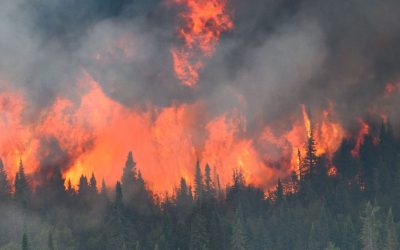National Post, Tuesday, October 01, 2002
Anyone who wants to see what’s wrong with the science behind the Kyoto accord should start with Vincent Gray’s new book, The Greenhouse Delusion. One of the leading global warming skeptics, Mr. Gray has produced what amounts to a field guide to skepticism — inexpensive, colourful and fact-filled. One does need to understand basic science to read it, but not all that much. The story is remarkably simple.
Mr. Gray’s focus appears to be quite narrow, but it is not. He seems to be talking just about the science volume of the recent three-volume “Third Assessment Report” of the Intergovernmental Panel on Climate Change of the United Nations. But it is this IPCC report that is meant when the press says that the science behind the Kyoto accord is “settled,” or at least that there is a “consensus” that global warming is real and that humans are causing it by burning fossil fuels.
Mr. Gray’s argument is that the science as a whole is full of holes, and he artfully uses IPCC quotes to make this point. In fact, he was an expert reviewer of the IPCC TAR, although his criticism was generally ignored.
The IPCC is a community of devoted believers in human-induced global warming. The consensus is theirs, not science’s. So despite Mr. Gray’s seeming preoccupation with picking apart IPCC quotations, it is really the whole of climate change science that is at issue. There are plenty of footnotes to take the curious reader further into this contentious realm, for it is likely that global warming is the most science-intensive public policy issue in history.
What makes the global warming issue so difficult scientifically is that it is about something very small, and very hard to find, if it even exists. Looking at an ordinary household thermometer, one sees that a degree centigrade is a very small amount. Half a degree is a lot less; you can hardly see it, yet that is the tiny amount behind the huge uproar. Some scientists think that the entire earth has warmed by one half-degree over the last 100 years. Others, like Mr. Gray, do not. This is the heart of the global warming debate.
The problem is that the earth is very large and the temperature is always changing, everywhere, so how can we possibly tell if overall it is a mere half-degree warmer today than it was around 1902? The origin of the theory of global warming (for it is just a theory) lies in taking the thermometer readings we happen to have from the last 100 years and massaging them in various ways. Some places have clearly warmed, others have clearly cooled. Many have gone up and down but with little apparent trend. To get a global result requires a lot of statistical manipulation.
Taken as a whole, the statistically combined 100-year numbers are up a little — one half-degree or so — hence the theory of global warming. Given this small warming, why has it occurred? One possibility (among others) is the carbon dioxide increase believed to have occurred over the same period, some of which is probably from fossil fuel burning. If so, if the CO2 keeps going up it will probably get even warmer. Magnify this and we get the fear of really big warming, dangerous warming, and the Kyoto accord as a first step to stopping it and saving the earth.
This breathless chain of scientific speculation is firmly grounded in the statistical analysis of a 100-year hodgepodge of temperature records, so that is where Mr. Gray trains his guns. I won’t spoil the story by revealing the details of his arguments. But if global warming were not a serious policy issue, this would be a very funny book.
Mr. Gray’s basic points are these. First, the thermometers in question are not a representative sample of the earth’s surface, much less of its atmosphere. They happen to be where people wanted to know the weather, mostly near population centres. There is virtually nothing from the oceans, poles, jungles, deserts, mountains, etc. In statistics this is called a “convenience sample,” because one takes the data where it is easy to get. It is axiomatic in statistical theory that one cannot draw meaningful conclusions about the whole from a convenience sample. To do so is a logical fallacy.
Second, whenever one finds a trend in statistics one is supposed to look for extraneous causes, called confounders. Mr. Gray has looked for, and found, such a cause in human development itself. This is usually called the “urban heat island” effect, and Mr. Gray is the guru of UHI, although it does not take urbanization per se to heat up a thermometer. Paving a runway will do it. Most of the thermometers are near human population centres and almost all of these have grown in the last 100 years, to say the least. The infrastructure produced by such growth tends to trap heat. It is quite possible that what human development has done is not to warm the planet, but just to warm some of the thermometers.
Third, beginning in 1979 we actually obtained a way to measure the overall temperature of the earth’s atmosphere: satellites. They do not show the warming that the thermometers show. So either the statistics based on the thermometers are wrong, which is likely, or somehow the surface is warming while the atmosphere is not. The latter is not impossible, but it is completely inconsistent with global warming due to CO2, because CO2 would trap the heat in the atmosphere, not at the surface.
Regarding the satellites, now that the year is ending the government will soon begin to tell us that 2002, like most recent years, was one of the hottest years on record. On the tainted, unrepresentative surface record that is. That it has not been hot according to the satellites will not be mentioned. This half-truth is so glaring that it is close to being a lie.
Along the way Mr. Gray takes time out to consider sea level rise and extreme weather events, the truly bad things that are predicted to come from global warming. He also looks briefly at the computer models that make these dire predictions. Here, too, it is simple measurement problems, not abstruse geophysics, that he flags.
In fact, the most interesting thing about this book is that the fundamental issues are so simple. This may account for the almost religious fervour of the debate. When you get to the fundamentals there is nothing clear-cut to go on. One either accepts, as a leap of faith, that the rickety 100-year temperature record is an accurate representation of the entire earth, up to the sky, or one does not. Everything follows from this decision.
Well, not quite everything, because even if the earth has warmed a little bit there is still the very real possibility that this warming is natural, that the models are no good, that warming is beneficial, etc. But that is not what Vince Gray’s wonderful little book is about. He goes to the heart of the debate. As he puts it, when the Emperor has no clothes on, there is no point worrying where he gets his shirts done.
David E. Wojick is a journalist and policy analyst who resides in Virginia and Ontario. E-mail: dwojick@ climatechangedebate.org; The Greenhouse Delusion: A Critique of Climate Change 2001 by Vincent Gray, Multi-Science Publishing Co. http://www.multi-science.co.uk
© Copyright 2002 National Post


